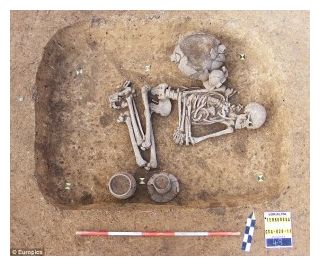To a certain degree, the anti-LGBT activists are correct about the fact that homosexuality has never existed throughout the history of the world, and gay marriage never actually existed. This is because the term homosexual and the identity of it only came into being within the last hundred and fifty years. Prior to that, same-sex couples existed, though they often did not exist in what we could call same-gender relationships.
Native American tribes have a long and noted history of 'third and fourth gender' individuals. These are women who live their lives as men and often take women as their spouses and men who live their lives as women and who often take men as their spouses. Today, the term two-spirit tends to be used to describe them, though once each nation and tribe had their own name for these individuals. There were often mythological reasons given for their existence, and they were often treated as special individuals.
Evidence is emerging that Europe had this concept for some time as well. The skeletal remains of a male third gender was found in the Czech Republic buried in the same manner that a woman would be. The skeleton dates to between 2900 BCE and 2500 BCE. He was not, as many sources say, a cave man. By this time, the Egyptian unification had already happened, and agriculture was well known. In fact, it is likely that this culture, which was a blend of stone and copper age in their tool and grave goods use, was likely rather sophisticated.
What is more, this skeleton is not the only two-spirit found. A woman's skeleton was found last year buried in the same manner as a man.
The male skeleton was found buried eastward with domestic jugs. This is normal for a woman's burial. The female skeleton was buried with weapons, hammers and flint knives, which is normal for a man's burial.
According to the Daily Mail:
During that period, men were traditionally buried lying on their right side with the head pointing towards the west; women on their left side with the head facing east.It is unlikely that this was a mistake, according to archaeologists. The people of the Corded Ware era took their funeral rites very seriously. Kamila Remisova Vesinova, the lead researcher on the site, stated "From history and ethnology, we know that people from this period took funeral rites very seriously so it is highly unlikely that this positioning was a mistake. Far more likely is that he was a man with a different sexual orientation, homosexual or transvestite. What we see here does not add up to traditional Corded Ware cultural norms."
In this case, the man was on his left side with his head facing west. Another clue is that men tended to be interred with weapons, hammers and flint knives as well as several portions of food and drink to accompany them to the other side.
Women would be buried with necklaces made from teeth, pets, and copper earrings, as well as domestic jugs and an egg-shaped pot placed near the feet.
It should be noted that this is the first time that a burial like this has been uncovered, but that does not mean that they did not happen at the time, or that, as Ms Vesinova suggests, it was not the cultural norm. The grave goods of a Celtic prince or chief were found in Germany, but his actual remains were not since the soil acidity in many areas in Europe is such that remains are often never found only grave goods. Of the hundred or so graves found in one ancient graveyard in York, England, UK, less than a third had any bones remaining.
Katerina Semradova noted that Siberian shaman were often buried in a manner similar to this male skeleton, but usually they had far more elaborate funeral goods. "This later discovery was neither of those. We believe this is one of the earliest cases of what could be described as a transvestite or third-gender grave in the Czech Republic."
Often times, two-spirit individuals were considered to be shaman and special to the tribe, at least in Native North American culture. In fact, most shaman tend to exhibit cross-gender identities no matter where the culture was.
As a note: both Dr. Paula Brooks and I have extensive training in archaeology and history.




The internet was abuzz with the possible discovery of the remains of a homosexual Neanderthal. At least, that is what sensationalistic publications referred to the remains as. Remains were found in the Czech Republic, of a male buried like a woman would be from that time and place, which is what led to the homosexual caveman tag. The subject was not a Neanderthal, and there is no way to prove he was homosexual. Here is the proof: Scientists insist first gay caveman rumors are inaccurate